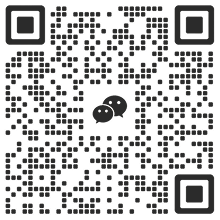In the field of blockchain and open source, efficient fund allocation has always been a problem. Now, an innovative project called Deep Funding is trying to solve this problem with artificial intelligence and decentralized review. This project, which is supported by Vitalik Buterin with an initial funding of $250,000, plans not only to solve the current resource allocation problem in the Ethereum ecosystem, but also to create a new model for the allocation of funds for future public goods.
01. Deep Funding
What is Deep Funding?
Deep Funding is an innovative project that optimizes the allocation of public goods funds through AI and decentralized review mechanisms, aiming to solve the problem of inefficient resource allocation in the Ethereum ecosystem. The project goal is to build a fair, transparent, and efficient funding system to support Ethereum and its key open source projects to achieve long-term sustainable development.
Official website: https://deepfunding.org/
What problem do you want to solve?
Currently, Ethereum public goods funding allocation has the following problems:
- Irrationality of human decision-making: When faced with complex and abstract problems, humans often find it difficult to make reasonable judgments.
- Favoring superficial projects: Election-based funding mechanisms tend to fund superficially obvious projects while ignoring deeper technical dependencies and complex contributions.
This results in some “hidden” infrastructure that is critical to the Ethereum ecosystem not receiving adequate support, and it may also waste resources on projects that may seem important in the short term but have limited long-term value.
What kind of thinking is used to solve the problem?
The solutions proposed by Deep Funding include:
1. Building Deep Graph
Deep Graph is a dynamic dependency graph that shows the dependencies between projects and assigns weights to each dependency. In this way, the contribution and actual value of public goods can be visualized, solving the problem of "invisible contributions" being difficult to measure.
2. AI model weighting and evaluation
- Data input: Based on various information of open source projects (such as number of stars, contributor activities, update time, etc.). This requires your imagination and understanding of the value of open source projects.
- Weight allocation: The AI model assigns weights based on the importance and actual impact of dependencies, and dynamically adjusts funding allocation.
- Verification and optimization: The model is spot-checked by a jury to ensure the rationality of the weights.
3. Jury review mechanism
- The jury is composed of experts who provide training data for the model by answering questions such as "Which is more important, project A or project B?" This type of question is chosen because it is relatively easy for humans to distinguish and answer.
- The cooperation model between humans and AI: humans are responsible for direction and value judgment, and AI provides data analysis support. After that, multiple good models that are more in line with human consensus will be selected for application.
4. Fair distribution of funds
Funds will be allocated based on the contribution ratio of the project, and there will also be some incentives for winning models.
Deep Funding will not only be used to build and distribute weights for open source software, but this model can be used in any scenario with dependencies and distributions, such as papers, music, film and television works, etc. Open source software is just an initial attempt, and Deep Funding hopes to become a solution applicable to various scenarios.
02. Deep Funding Competition
At present, the first Deep Funding competition focuses on GitHub repo and open source projects. Through the dependencies of open source projects, a weighted graph is built to obtain the donation amount that each repository should receive. Then the focus is on open source projects under the Ethereum label, especially clients.
The current progress of the Deep Funding project includes:
- Sponsorship and funding: Vitalik Buterin provided an initial sponsorship of $250,000.
- Data preparation: Collect the Ethereum dependency graph, involving data of about 40,000+ edges. It is now ready.
- Mechanism Design: Launch an AI model competition (on Kaggle) and currently recruit AI Models.
- Pilot evaluation: Verify the model effectiveness through jury spot checks; apply the dependency weight model to Ethereum-related projects and see the actual effect.
Of the 250K prize, $170k will be allocated to projects based on the weight of the dependency graph, $40k will be awarded to the model that performs best in the review spot check, and $40k will be awarded to open source submitted models. The innovation of these models will be determined after evaluation by an expert jury.
There are still many challenges to be addressed
- Fairness of review and incentive mechanism: How to ensure the neutrality and long-term participation enthusiasm of the jury? How to build a fair and effective jury?
- Effectiveness of AI models: How to accurately weight deep dependencies to avoid model abuse or gamification?
- Dynamic adjustment mechanism: How to balance self-assessment and external review to avoid bias?
- Funding sources and incentives: How to attract more funds to participate in the distribution, especially for non-code contributions?
We will discuss and explore step by step.












